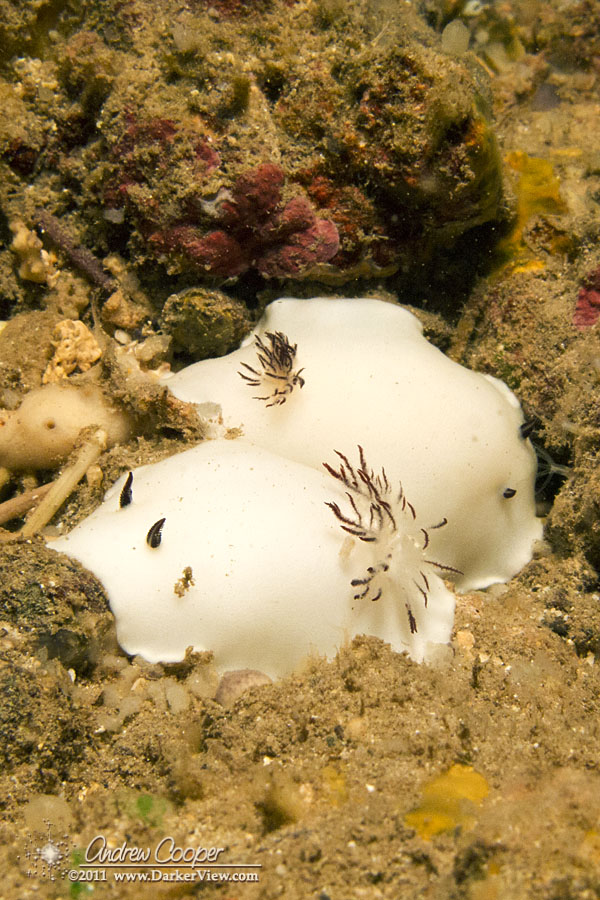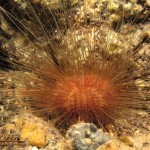
A Couple Fellows

When you want to see the stars, find someplace dark

Venus will pass about one degree from Neptune on January 12th. The two will be quite close for several days, under 3°, from the 10th to the 15th, with close approach on the 12th. As the two are located high in the evening sky they are well placed for observation. This is an opportunity to find the distant ice giant with no difficulty at all. A telescope is required to see Neptune, at about 8th magnitude Neptune is about 60,000x dimmer than Venus shining at -4 magnitude. Check a chart for proper identification, there are several moderately bright stars in the region to confuse with the dim planet. On the 12th, a 6.9 mag star will directly between the two. The odd green-blue color of Neptune should help distinguish the planet.
Can anything go smoothly? Please?
A simple job. Get an 80 pound optical interferometer back under the bench. Nothing like two guys setting the thing on my chest so I can worm my way underneath and heave this beast back onto it’s shelf. Then we have to bolt the fold mirror back in place, another thirty pound piece of awkwardness, just hold it in place to get the bolts in. I hold while Olivier tries to thread the bolts. We also have to replace the pellicle, a bit of ultra-thin optical film that will break if you touch it. Then there is an hour spent aligning the thing. chasing my tail trying to get a properly centered image of the deformable mirror. Sometimes optical alignments just go that way. I finally got a decent image, just to learn there was some vibration in the system. I adjusted some shims to reduce the issue, but there is more to be done.
Much of the remaining day is spent troubleshooting a simple optical shutter in the K1 laser. It fails to completely open. When it fails the safety system detects the failure and shuts down the entire laser. A couple hours of checks later has me convinced that the hardware is working, more or less. The design could have been better. The critical issue is the tight timing requirements. The circuit expects the mechanical shutter to actuate in 50ms, it used to, but as it has been used for a few years, it doesn’t any more. Why they did not simply allow a few hundred milliseconds I have no idea, dumb design, there is no issue with a longer timing window.

There is a camera in the laser enclosure. We use it for tele-presence. As I worked, Pete, our laser engineer, was on the phone assisting from headquarters. He could run the software remotely and watch as I probed the system to measure the timing. Unbeknownst to me, Pete saved a couple images from the camera and sent them to me. The photo does reveal the day I was having. Thanks Pete… I think.
Adaptive Optics Opto-Mechanical Engineer
W.M. Keck Observatory seeks a qualified Opto-Mechanical Engineer at its facilities in Hawaii to join a team that develops optimizes and maintains the Observatory’s Adaptive Optics (AO) systems.
Keck Observatory operates two of the largest and most scientifically productive optical/infrared telescopes in the world. Both telescopes are equipped with operational Laser Guide Star (LGS) AO systems whose capabilities continue to be developed to maintain their scientific competitiveness. The twin 10-meter telescopes are located on the summit of Mauna Kea, at almost 14,000 feet above sea level on the Big Island of Hawaii, one of the premier sites for astronomy.
Responsibilities
Qualifications
Applications/Resumes are received online only via the website:
www.keckobservatory.iapplicants.com
I have spent much of the day, between doing yard work, working on the style sheet for Darker View. I have solved a few little issues, put a header image in place, and learned a great deal about the intricacies of CSS and WordPress. I still have some problems with tables and the favicon, I will just attack the issues one-by-one.
I have also learned a bit about WordPress templates, making a few modifications here and there. Good progress, the whole thing is looking much better.The major bug of the Blogum theme seems to be putting a ‘Read More’ at the bottom of every post, even if it has nothing else to read. This one will be a challenge. Otherwise I have figured out date formats and many of the other WordPress function calls.
If you have any comments or suggestions, please comment!
Update… The Read More bug is fixed!
-4.9 magnitude? Inferior conjunction? Maximum elongation? 3.4° separation? To explain many of the basic terms I use to describe sky events I really need to post some explanation. Something I can link to in order to explain myself. Using the magic of hypertext as it was originally meant to be used.
I have written a couple more astronomy basics posts to go along with the sky events postings. I have copied over a few more posts from the old DV blog, updating and refreshing them as I did so. Expect to see a series of astronomy basics posts through the month as I get everything setup in the new blog.

A pretty urchin found in a cave. Apparently this is the rule for these urchins, found under rock and rubble when small, larger individuals found in caves or deep crevices with an active aversion to light. Most urchins move pretty slowly, the motion barely perceptible. This echinoderm was moving, tube feet furiously propelling it along the cave roof as it tried to avoid our lights.
Yes, I have changed the theme. Sorry.
The theme currently displayed is Blogum. I think this is the way I want to go. The original appearance was back on white. Not really appropriate for a blog called Darker View. I have edited the CSS for a gray on black appearance closer to the original DV. A few things do not work quite right, particularly the tables I had so neatly laid out for the earlier theme. Just more work ahead, bear with me.
